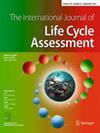评价巴西南部集约化养猪场的环境、经济和社会方面:一个案例研究
IF 5.4
3区 环境科学与生态学
Q2 ENGINEERING, ENVIRONMENTAL
引用次数: 1
摘要
摘要目的本研究的目的是量化和了解集约化养猪生产在家庭农场水平上的影响。通过对系统的环境、经济和社会方面的综合评估,研究了圣卡塔琳娜州西部的一个案例,以确定生猪生产的不利问题(热点)。所计算的定量和定性指标可以指导和支持各种利益攸关方和行动者的决策过程。方法采用ISO 14040 (ISO 2006a)中规定的环境生命周期评价方法,对生猪生产系统从摇篮到农场大门的环境绩效进行评价。功能单位(FU)为1 kg活重(kg- lw)。生命周期可持续性评估(LCSA)的结构基于Neugebauer等人(J Clean Prod 102:165-176, 2015)和Chen和Holden (J Clean Prod 172:1169-1179, 2018),他们提出了一个分层框架来评估产品对环境、社会和财务方面的影响。环境生命周期成本中的经济维度或生命周期成本(Hunkeler等)。Crc出版社,伦敦,2008)侧重于农场层面的活动。社会影响是根据联合国环境规划署/SETAC(2009)准则计算的。结果与讨论在气候影响、酸化和富营养化方面,育肥猪生产的环境绩效略低于参考值。与参考值相比,经济影响趋于积极,反映了农民和员工为保持高生产率和减少生猪损失数量所做的努力。然而,这一努力并没有带来更大的利润,导致农场收入较低。由于工资高于参考值,低盈利能力的影响没有转移到员工身上。需要为小农提供更多的教育,众所周知,这与采用新技术有积极的关系,从而减少不利的环境和社会影响并增加经济回报。结论社会和经济因素的相互作用表明,养殖场不太可能取得更好的环境绩效。有限的经济回报和低教育水平对农民采用新技术改善环境结果的能力产生了负面影响。基于可持续性三个方面的一致模型的LCSA的使用,使了解这些因素的相互作用成为可能。本文章由计算机程序翻译,如有差异,请以英文原文为准。
Evaluating environmental, economic, and social aspects of an intensive pig production farm in the south of Brazil: a case study
Abstract Purpose The objective of this work was to quantify and understand the impacts of intensive pig production at family-farm level. A case study from the west of Santa Catarina State was used to identify adverse issues (hotspots) of pig production by integrating the assessment of the environmental, economic, and social aspects of the system. The quantitative and qualitative indicators calculated can guide and support the decision-making processes for a variety of stakeholders and actors. Methods The environmental performance of the pig production system was assessed from cradle-to-farm gate using environmental Life Cycle Assessment methodology set out in ISO 14040 (ISO 2006a). The functional unit (FU) was 1 kg of Liveweight (kg-LW). The structure of the Life Cycle Sustainability Assessment (LCSA) was based on Neugebauer et al. (J Clean Prod 102:165–176, 2015) and Chen and Holden (J Clean Prod 172:1169–1179, 2018), who proposed a tiered framework to evaluate the impacts on the environmental, social, and financial aspects of a product. The economic dimension or Life Cycle Cost (Hunkeler et al. in Environmental life cycle costing. Crc Press, London, 2008) focused on farm-level activities. The social impact was calculated based on the UNEP/SETAC (2009) guidelines. Results and discussion The environmental performance of the finishing pig production was slightly lower than reference value for climate impacts, acidification, and eutrophication. The economic impacts tended to be positive, reflecting the efforts of the farmer and employee to maintain high productivity and reduce the number of pig losses in comparison with the reference values. However, this effort did not result in greater profitability, causing low farm income. The impacts of low profitability were not transferred to the employee since the wage were above the reference value. There is a need for more education for small farmers, which is known to have a positive correlation with the adoption of new technologies, thus reducing adverse environmental and social impacts and increasing economic return. Conclusions The interaction of social and economic factors suggests it is unlikely that the farm can achieve better environmental performance. The limited economic return and low level of education have a negative impact on the farmer’s capacity to adopt new technologies to improve environmental outcomes. The use of LCSA, based on a consistent model across the three aspects of sustainability, made it possible to understand the interaction of these factors.
求助全文
通过发布文献求助,成功后即可免费获取论文全文。
去求助
来源期刊
CiteScore
10.60
自引率
10.40%
发文量
100
审稿时长
8-16 weeks
期刊介绍:
The International Journal of Life Cycle Assessment (Int J Life Cycle Assess) is the first journal devoted entirely to Life Cycle Assessment and closely related methods. LCA has become a recognized instrument to assess the ecological burdens and impacts throughout the consecutive and interlinked stages of a product system, from raw material acquisition or generation from natural resources, through production and use to final disposal. The Int J Life Cycle Assess is a forum for scientists developing LCA and LCM (Life Cycle Management); LCA and LCM practitioners; managers concerned with environmental aspects of products; governmental environmental agencies responsible for product quality; scientific and industrial societies involved in LCA development, and ecological institutions and bodies.

 求助内容:
求助内容: 应助结果提醒方式:
应助结果提醒方式:


